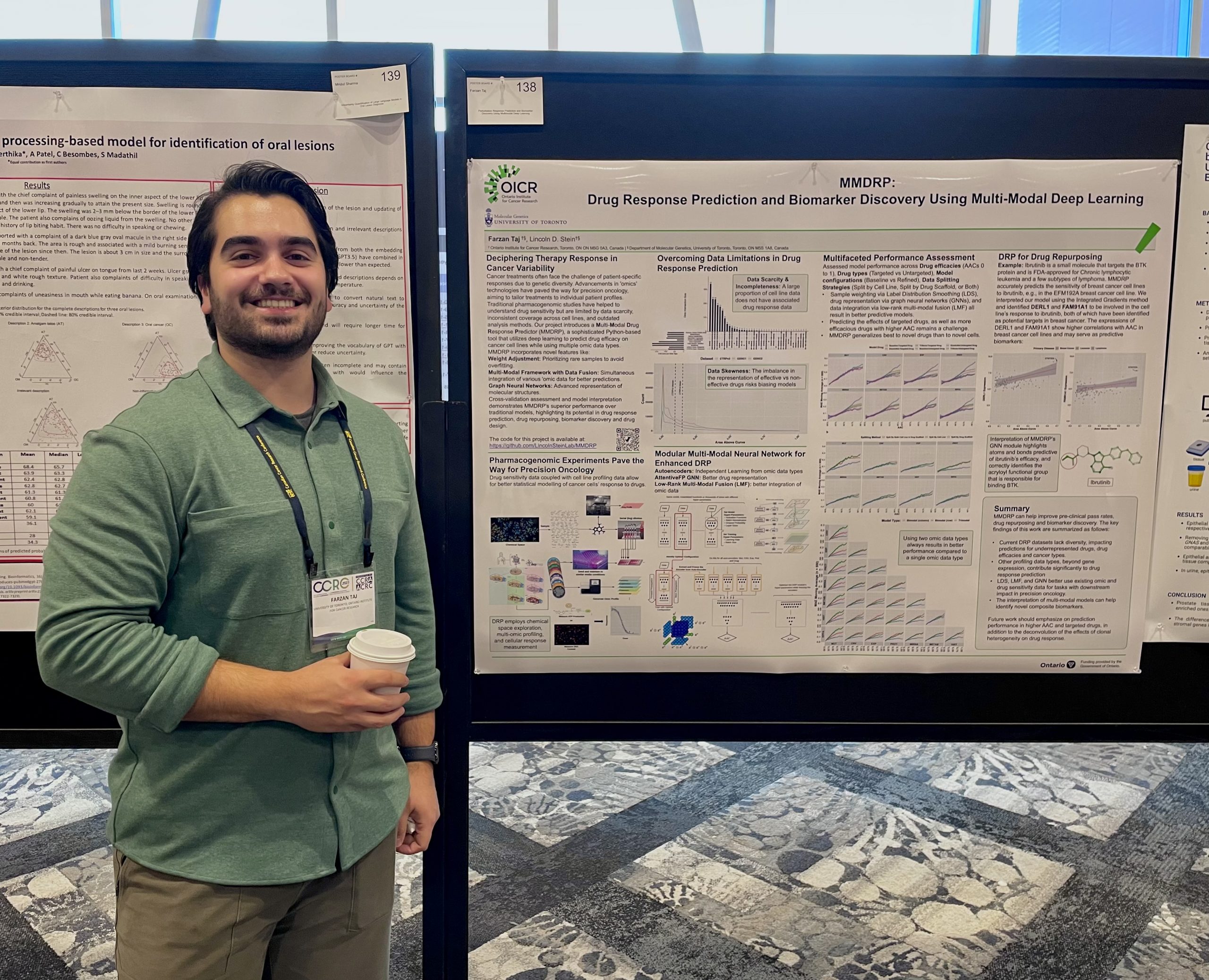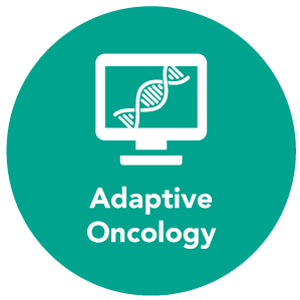OICR PhD student Farzan Taj created a ‘deep learning’ algorithm that uses different sets of molecular information to predict how tumours respond to drugs.
Precision medicine is about knowing which treatments work best for which patient.
But the more we learn about how small genetic differences can influence how one person responds to one medicine versus another, the harder that becomes.
In cancer research, there’s a nearly limitless combination of drugs and tumour subtypes. Which is why researchers are increasingly turning to machine learning to help predict the most effective medication against different types of cancers.
Farzan Taj has developed a tool he believes can help cancer researchers do just that.
Taj is a PhD student in Lincoln Stein’s lab at OICR studying computational biology and molecular genetics. He dedicated his master’s studies to exploring how machine learning – branch of artificial intelligence – could be harnessed for drug response prediction.
The result is MMDRP, a multi-modal drug response prediction program that was recently described in the journal Bioinformatics Advances.
MMDRP works by analyzing existing data on how certain tumours responded to certain drugs and then makes generalized predictions about how other drugs and tumours might interact based on their molecular makeup. The program uses ‘deep learning’, an advanced subtype of machine learning that processes information much like the human brain.
Taj found that many of the algorithms created to predict drug response used only one type of molecular information – just gene expression data or just mutational data, for example. But deep learning allowed Taj to incorporate multiple kinds of molecular data in his analysis.
“We observed that by combining different types of data that describe various facets of cellular biology, we generated better, more accurate predictions,” Taj said.
A powerful tool like MMDRP can help find drugs that are already on the market approved for treating a different disease that can be repurposed to treat cancer, Taj says. That can mean quicker access to new cancer treatments without having to develop a whole new drug.
Taj also found his algorithm could help identify the unique genetic features involved in the growth and spread of tumours. These kinds of genetic clues are called ‘biomarkers,’ and they can be critical to detecting, diagnosing and treating cancer. Through his research, Taj was able to identify potential biomarkers that may be relevant to breast cancer.
MMDRP is available open-source, and Taj encourages researchers to use it and explore ways to improve it. He hopes the program can ultimately be a valuable tool to support new discoveries in treating cancer.
“By performing these kinds of experiments in silico, or with computers, we can hopefully help focus wet lab experiments on more promising therapies and bring new, personalized treatment options to cancer patients,” he says.




